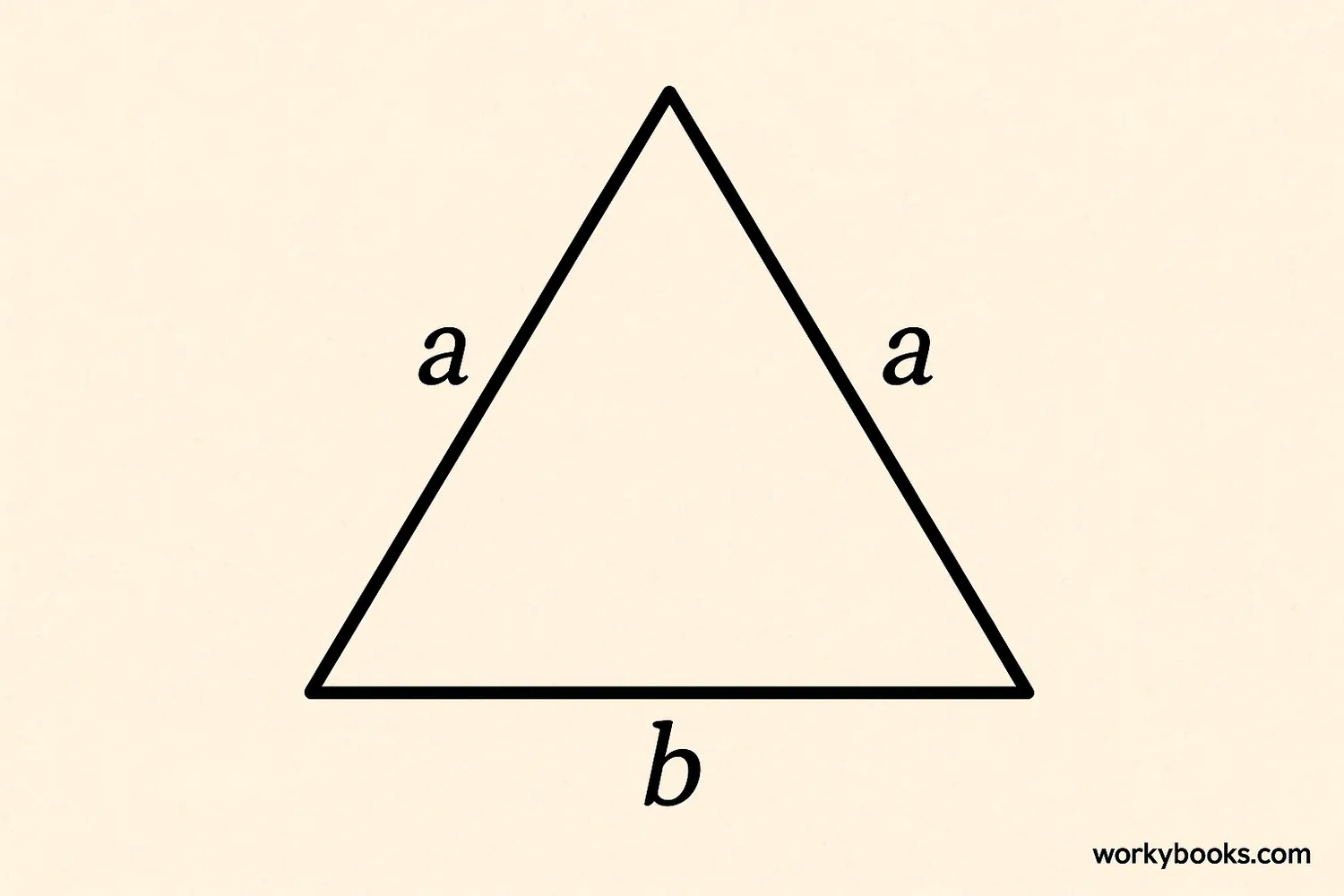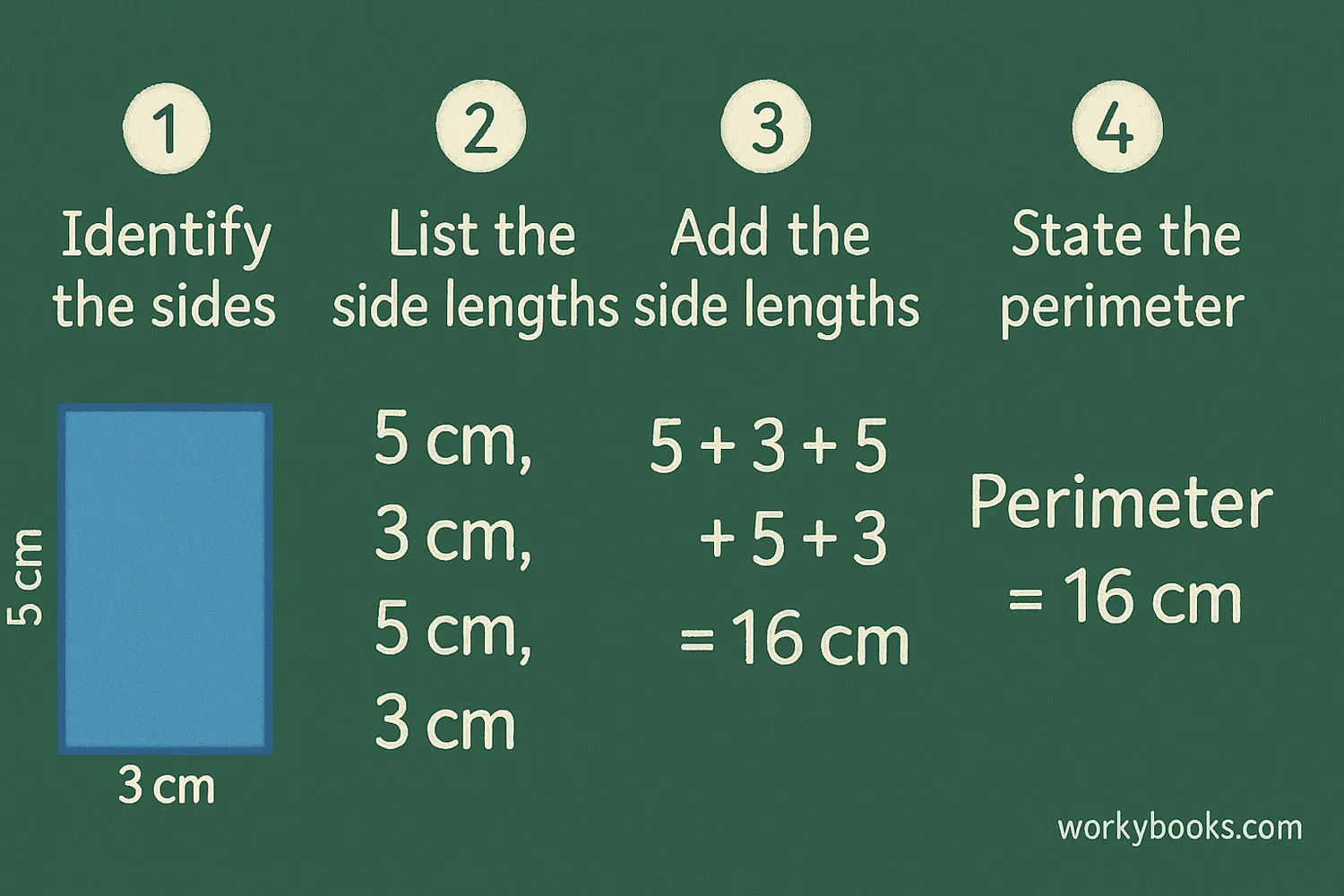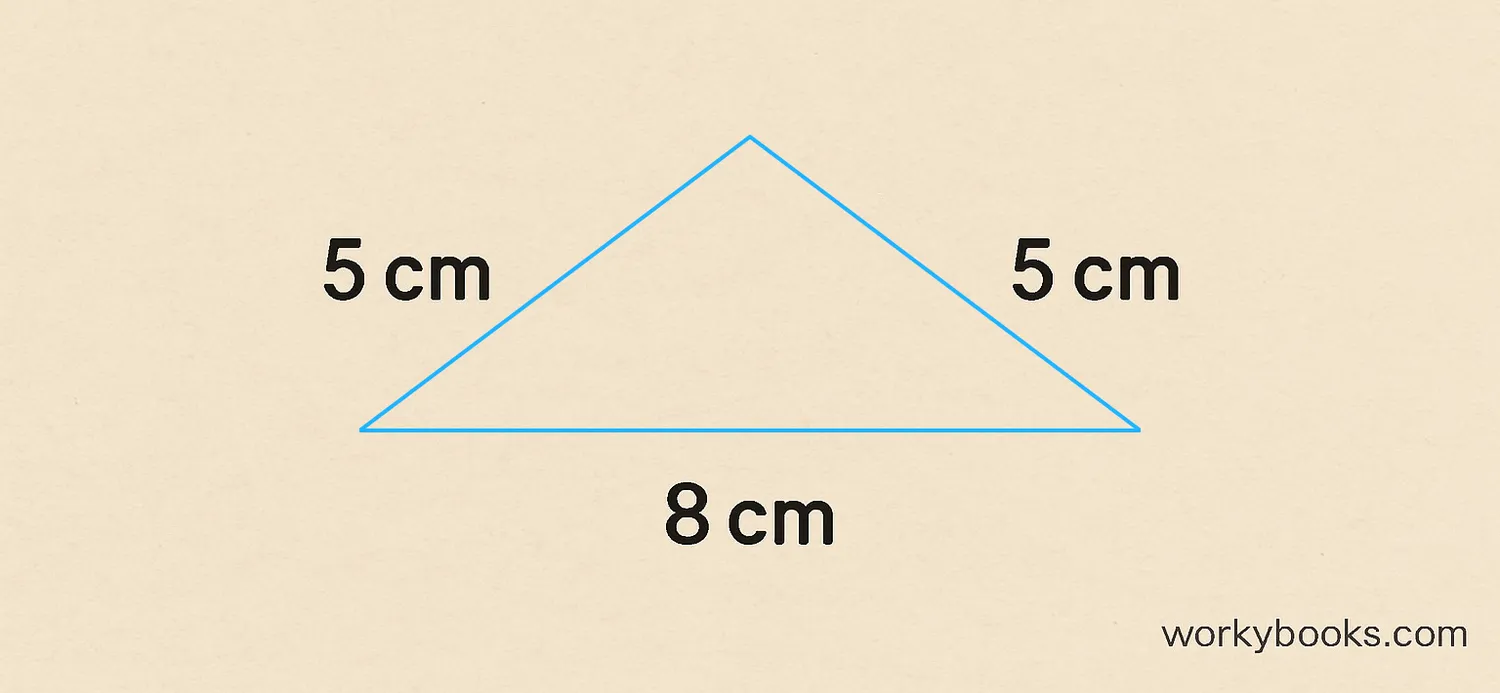Perimeter of Isosceles Triangle - Definition, Examples, Quiz, FAQ, Trivia
Learn how to calculate the perimeter of isosceles triangles with simple steps and examples!
What is an Isosceles Triangle?

An isosceles triangle is a special type of triangle that has two sides of equal length. The two equal sides are called legs, and the third side is called the base. The angles opposite the equal sides are also equal.
Think of it like a pizza slice or a roof of a house - they often have two sides that are the same length!
Math Fact!
The word "isosceles" comes from Greek words meaning "equal legs". Isn't that a perfect name for this triangle?
Perimeter of an Isosceles Triangle Formula

The perimeter of any shape is the total distance around its outside. For an isosceles triangle, we have a simple formula:
Where:
• P is the perimeter
• a is the length of each of the two equal sides
• b is the length of the base
Remember!
Since an isosceles triangle has two equal sides, we multiply the length of one of those sides by 2, then add the length of the base.
How to Find the Perimeter of an Isosceles Triangle

Finding the perimeter of an isosceles triangle is easy when you follow these steps:
Identify the Equal Sides
Find the two sides that have the same length. These are your 'a' values.
Measure the Base
Find the length of the third side. This is your 'b' value.
Apply the Formula
Use the formula P = 2a + b to calculate the perimeter.
Add Units
Don't forget to include the units (cm, m, inches, etc.) in your answer.
Remember, if you already know all three side lengths, you can simply add them all together. But the formula helps when you know which sides are equal.
Example Problem

Let's try an example together! Look at this isosceles triangle:
Problem: An isosceles triangle has two equal sides that are each 5 cm long, and a base that is 8 cm long. What is its perimeter?
Step 1: Identify the values
a = 5 cm (length of each equal side)
b = 8 cm (length of the base)
Step 2: Use the formula
P = 2a + b
P = 2 × 5 cm + 8 cm
Step 3: Calculate
P = 10 cm + 8 cm
P = 18 cm
Answer: The perimeter is 18 cm.
Great job! You just calculated the perimeter of an isosceles triangle. Remember to always include the units in your answer.
Triangle Quiz
Test your knowledge about isosceles triangles and their perimeter with this quiz!
Frequently Asked Questions
Here are answers to some common questions about isosceles triangles:
Math Trivia
Discover some interesting facts about triangles and geometry!
Ancient Knowledge
Triangles were studied by ancient Egyptians over 4,000 years ago! They used triangles in building pyramids and in land surveying after the Nile River flooded each year.
Strong Shapes
Triangles are the strongest geometric shape. That's why you see triangular shapes in bridges, roofs, and towers. The isosceles triangle is especially common in architecture.
Triangles in Nature
Isosceles triangles appear often in nature. Many leaves, crystals, and even the faces of mountains form isosceles triangles. Some bird wings also form isosceles triangles when spread wide.
Pythagorean Connection
The famous Pythagorean theorem (a² + b² = c²) works with right triangles. An isosceles right triangle has two equal sides (a and b), so the formula becomes a² + a² = c² or 2a² = c².


